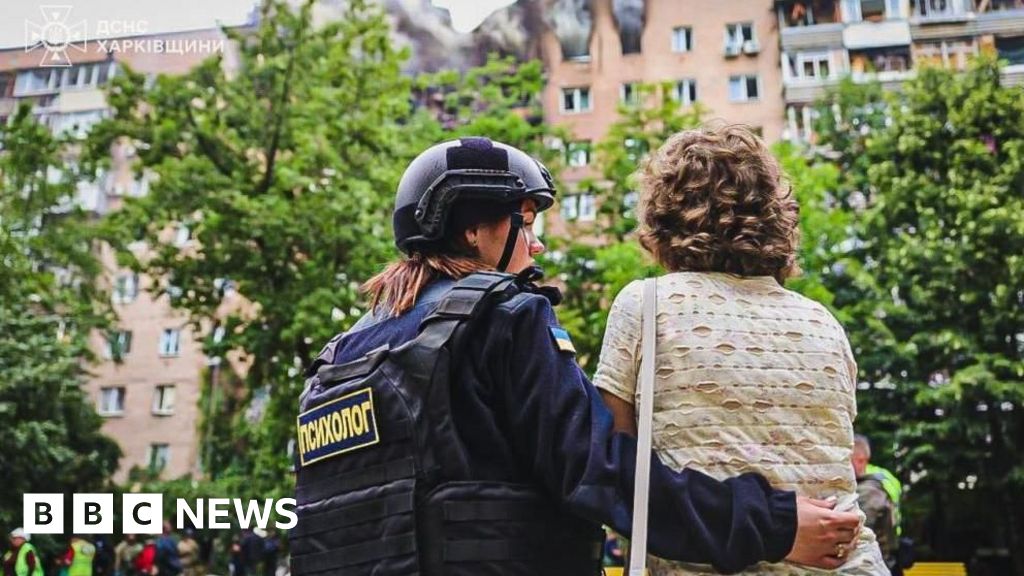
Introduction
The recent article detailing a large-scale Russian drone and missile assault on Kharkiv has generated significant public concern, particularly around the motives behind the targeting of civilian neighborhoods. One user asked a critical question: if this military escalation is meant as retaliation, why are homes and apartment buildings the focal point? This fact-check aims to analyze the claims made, uncover the facts, and evaluate whether the article provides a complete and accurate picture—or if certain elements were omitted or overstated.

Historical Context
Russia’s full-scale invasion of Ukraine began in February 2022 and has since led to widespread destruction and major civilian casualties. While early combat was primarily on the front lines, long-range strikes—using missiles and drones—have increasingly targeted urban centers. Kharkiv, Ukraine’s second-largest city near the Russian border, has endured repeated bombardments since the war’s onset. Moscow often cites retaliatory motives, claiming Ukrainian attacks on Russian territory justify its offensives—though international bodies have frequently challenged the legality of such claims under international humanitarian law.

Fact Check: Evaluating Key Claims
Claim #1: “Russia launched 48 drones, two missiles, and four gliding bombs in the latest Kharkiv attack, targeting civilian areas including 18 apartment buildings.”
Verified. According to statements from Kharkiv’s Mayor Ihor Terekhov and corroborated by the regional governor Oleh Syniehubov, at least 18 apartment buildings and 13 homes were struck during the attack. The BBC also accurately cited the civilian casualties and infrastructure damage. Independent reporting from Reuters and local Ukrainian emergency services supports these figures. This level of civilian infrastructure targeting has also been recorded by OSCE and UN monitors in past incidents, validating the high likelihood of the current attack following a similar pattern.
Claim #2: “Moscow said the strikes were in response to ‘terrorist attacks by the Kyiv regime,’ after Ukrainian drones hit Russian airfields.”
Partially accurate but misleading. While Moscow did cite Ukrainian drone strikes—reportedly damaging up to 40 aircraft at Russian airfields—as justification for the Kharkiv offensive, describing the Ukrainian actions as “terrorist” lacks impartiality. Independent analyses, such as those from the Institute for the Study of War (ISW), confirm Ukraine’s drone attacks, codenamed “Operation Spider’s Web”, targeted military assets deep inside Russian territory. Under international law, such military-on-military actions do not equate to terrorism. Meanwhile, Russia’s retaliatory targeting of civilian centers raises legal and ethical concerns under the Geneva Convention, which prohibits attacks against civilian populations.

Claim #3: “The strikes on Kharkiv make ‘no military sense’ and are ‘pure terrorism,’ according to President Zelensky.”
Plausible interpretation supported by analysis. President Zelensky’s statement reflects widespread sentiment among international observers, including the UN Human Rights Monitoring Mission in Ukraine, which has repeatedly condemned indiscriminate Russian shelling of populated areas. While the term “terrorism” in this context is a rhetorical device rather than a legal classification, the fact that no military installations were significantly impacted aligns with his assertion that the attacks lacked strategic military logic. Military analysts at the Royal United Services Institute (RUSI) have frequently noted that Russia’s pattern of targeting civilian areas appears aimed at pressuring Ukrainian morale rather than achieving battlefield superiority.

Claim #4: “Russia claims Ukraine delayed the prisoner exchange, failing to show up to collect bodies of 1,000 soldiers.”
Unsubstantiated, with conflicting narratives. While Russian negotiator Vladimir Medinsky attributed the delay in the prisoner exchange to Ukraine’s absence and alleged that over 1,000 bodies were transported without coordination, Ukraine strongly denied this version of events. The Ukrainian Coordination HQ for Prisoners of War stated that no official date had been set for the exchange and accused Russia of acting unilaterally. Independent verification of either party’s account is currently unavailable, and international observers have not confirmed either claim. At this point, this statement is best categorized as disputed and politically motivated.

Conclusion
The BBC article presents a largely accurate depiction of Russia’s drone and missile assault on Kharkiv, substantiated by official reports and international observers. It correctly identifies the scale and urban nature of the strike, as well as the potential illegality of targeting civilian buildings. However, it omits some context, particularly the legality of Ukraine’s own drone strikes and international condemnation of Russia’s tactics. While Ukrainian government narratives are quoted extensively, Russian claims—particularly regarding the prisoner exchange—are presented with minimal scrutiny, and without clearly identifying lack of verifiable evidence. Thus, while factually grounded, the article contains limited nuance in attributing intent and legality, which may lead readers to interpret events in stark moral binaries without all available context.
Take Action
Want to stay informed with facts, not fear? Download the DBUNK app to verify the news you read, or follow us on social media to join the fight against misinformation.

